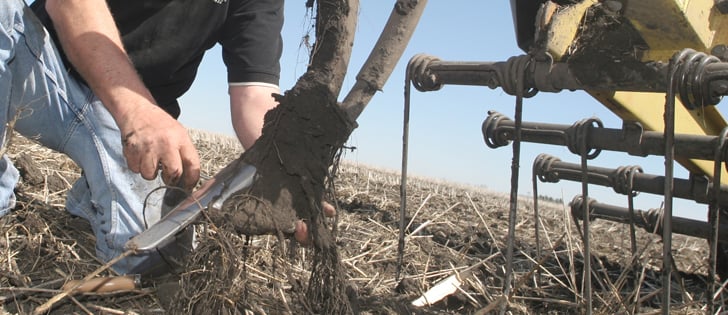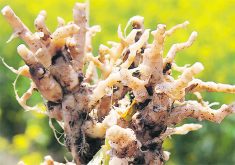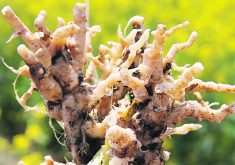DAUPHIN, Man. — In February, Dan Orchard had a eureka moment.
Orchard, a Canola Council of Canada agronomist in central Alberta, spends a lot of time thinking and talking about clubroot because the disease affects hundreds of farms in his area.
Earlier this winter, after speaking to a grower on the phone, an idea popped in head: farmers should have a separate entrance and exit for every field.
“This is like a two-week old (idea),” said Orchard, who spoke at Canolab, a Canola Council agronomy workshop held March 15-16 in Dauphin, Man.
Read Also

Farming Smarter receives financial boost from Alberta government for potato research
Farming Smarter near Lethbridge got a boost to its research equipment, thanks to the Alberta government’s increase in funding for research associations.
Years ago, Orchard read something about separate exits and entrances, near the bottom of a list on clubroot management strategies.
He initially dismissed the concept but now it makes sense.
“The most contaminated spot for clubroot tends to be the entrance,” he said. “In Alberta, over 90 percent of (infected) fields have clubroot at the entrance.”
Therefore, if a farmer leaves a field at the entrance the tractor, seeder or cultivator is likely covered in soil and loaded with billions of clubroot spores.
“We’re moving it (spores) around with equipment and dumping it at the entrance. Then leaving through this most infested spot and taking it somewhere else,” Orchard told a group of producers and agronomists at Canolab in Dauphin.
Holly Derksen, Manitoba Agriculture plant pathologist, also spoke about clubroot management in Dauphin.
Testing shows that spore counts in Manitoba canola fields are much lower than central Alberta, where counts per gram of soil can be in the millions.
Most Manitoba fields have less than 10,000 spores per gram of soil, but symptoms of clubroot have been found in five municipalities.
Derksen said a separate exit could mitigate the further spread of clubroot in Manitoba, but she suggested testing the soil at an exit to ensure the area isn’t infested.
The experience in Alberta indicates a separate field exit would be useful for a couple of reasons.
One, in many fields the entrance is infected but the middle is not.
“If the exit was (somewhere else) the whole field would have to get infested before you would take it with you,” Orchard said.
Two, entrance areas are usually muddy and likely contain soil from multiple fields.
“If you exit at the entrance, you could be taking five, six, seven or eight types of soil, depending on how many fields you’ve come (into that field) from,” he said. “When you exit somewhere else, you’re only taking one type of soil with you. The soil from that field.”
Possible source?
Clubroot galls were found on a canola field near Swan River, Man., in 2015. It may not be the cause but before the infection was discovered, the affected farmer bought a combine from a county in central Alberta.
Contact robert.arnason@producer.com


















